Due to the rough terrain that ATV tires are subject to, getting a rip or puncture in tires is not uncommon. However, rips are especially mind boggling for ATV owners who recently bought new tires. Get new tires is pricey and patching tires seems to be more economical, but can ATV tires actually be patched?
The good news is that ATV tires can be patched much like a regular car tire. Depending on the quality of the patch, the repair may even last a while before you have to worry about it. Patching an ATV tire can save you some money if you learn to do it yourself.
Patches aren’t permanent, especially for ATVs that are often driven on rocky terrain. If the patch doesn’t break, it’s possible to keep your tire until it’s time to change to a new one, although it’s recommended to get a new tire.
In this post, we will go over everything you need to know about patching up your tires.
Patching vs Plugging ATV TiresThere is a slight difference between patching and plugging of tires. Patching is usually done from the inside of the tire and on rips or sidewall tears. These rips will require a larger patch to cover the rip.
Plugging is usually done on the outside and works best for hole punctures caused by spikes or other sharp objects. The repair of these kinds of damages are usually pretty straight forward and requires a tire plug kit.
If you have tubeless tires, patching from the outside is probably the easiest option. You don’t need to remove the wheel. All you need is a tire repair kit and some CO2 cartridges.
No matter which tire repair kit you choose, it will usually come with the following items:
Here are the steps you need to plug your tire using the tire repair kit:

Sidewall rips and tears are sometimes unavoidable and if you’re using tubeless tires, you need to be prepared to fix rips on the fly.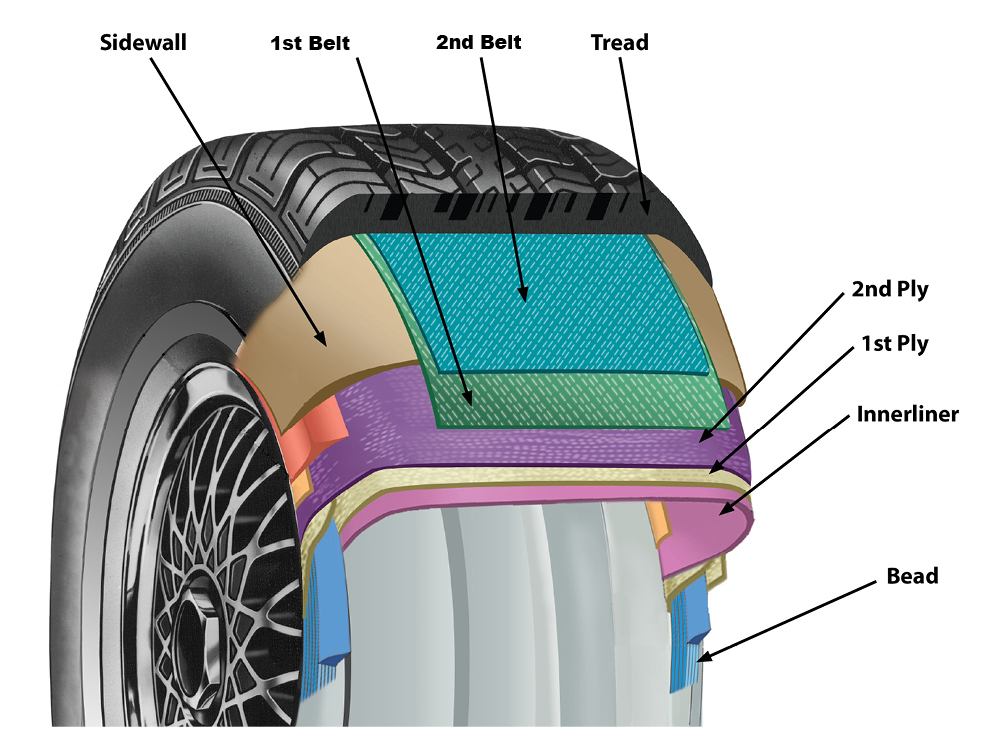
For slidewall rips, it’s best to patch the tire from the inside. This minimizes the chances that the patch will rub other objects outside of your tire, making your patch more secure.
For this fix you’re going to need to remove your tire from the rim. It’s recommended that you practice this at home by deflating your tires, that way you will know what to do even if you’re stranded in the middle of nowhere.
Removing the ATV Tire from the RimFor removing the tire from the rim, you will need two tire irons with flat blades that will be used to wedge the tire out of the rim.
Here are the steps you need to follow if you want to remove your ATV tire from the rim.
 Insert it between the edge of the ATV tire and the rim.
Insert it between the edge of the ATV tire and the rim. Once you have removed the tire, the next step is to patch it from the inside. You will need a tire patch kit for this procedure. A tire patch kit will usually come with the following items:
Here is how you would use the tire patch tool:

Once your tire is patched and ready to be placed back onto the rim. The steps to do this is basically the reverse of removing the tires.
Here are the steps for installing the ATV tire back onto the rim:
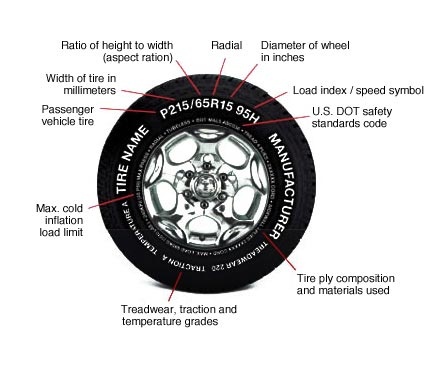
It’s all fun and games when you’re riding near your home. Even if your tires rip or puncture, you will be able to quickly run home and get the supplies you need to fix them.
However, if your riding in a remote area, you wouldn’t want to be stranded with a 500 pound machine. Therefore, it’s a good idea to bring along a few items with you if you’re planning for a long trip.
Here is a list of things you bring with you. You can put them in a bag strapped to your ride:
The above list provides the basics of what you’ll need for repairing tires. Before you go, do some planning, get an idea of the area and terrain you will be riding on and bring the necessary items with you in case you get a flat tire.
Before you go, do some planning, get an idea of the area and terrain you will be riding on and bring the necessary items with you in case you get a flat tire.
Yes, you can put tubes in your ATV tires. Tubes are usually made of latex or butyl rubber. They are inserted inside of your tires and when inflated, provides an extra layer of protection and structural integrity for your tires. They are great if you run into large rips on the sidewall of your tires that may be difficult to patch.
Keep in mind that if your sidewall rips, you still need to replace your tires or patch it. The innertube is there is maintain the structural integrity until you can get home.
Most ATV tires nowadays are tubeless but it’s not a bad idea to install them.
Should You Slime or Fix a Flat Atv Tire?Slime is a type of tire sealant that you squeeze into your ATV tires or tube. When a puncture occurs, air from inside of the tire will escape through the puncture. If you added Slime to your tires, the air will drive the slime through the hole. As the slime passes through, it dries and plugs the hole.
If you added Slime to your tires, the air will drive the slime through the hole. As the slime passes through, it dries and plugs the hole.
So should you use Slime on your tires or fix your ATV tires by patching or plugging? The answer to this question depends on the types of damage you have on your tires. Let’s discuss this in detail below:
Advantages of using Slime Slime can be pre-installed up to 2 years.
Slime can be pre-installed up to 2 years. If you are debating if Slime is right for you, check out Slime’s Official FAQ to learn more about this product.
To use Slime on your ATV tires, follow these instructions:
A typical ATV will require 24oz (710ml) of Slime
 2 miles (32km)
2 miles (32km)Getting a flat tire on an ATV is a fairly common occurrence, and if you’re not prepared for it, it can be a huge hassle too. The best case scenario is you get a flat tire near home, or near your vehicle. But most of the time it happens miles away on the trails. If you didn’t bring the right tools it becomes a major pain, and could be dangerous too.
The last thing you want is to be miles from home with a flat tire you can’t fix. You’ll have to ride on a flat tire, which could cause even more damage to your machine, or worse, you could have to push your few hundred pound machine with a flat tire all the way back. Trust me, you definitely want to prevent a scenario like this.
It happened to me before, I got a flat tire a couple miles from home, and had no flat tire repair kit with me. I still drove the quad back home with a flat tire, but that ended up banging my rim up pretty badly and shredding my tire up. What started out as a simple flat tire fix turned into me needing a whole new tire and rim, it was a bad day. I highly recommend at least keeping a small Tire Repair And Inflation Kit (link to Amazon) on your machine for emergencies.
What started out as a simple flat tire fix turned into me needing a whole new tire and rim, it was a bad day. I highly recommend at least keeping a small Tire Repair And Inflation Kit (link to Amazon) on your machine for emergencies.
The easiest and fastest way to fix a flat tire out on the trail, is to plug it. This is where having the tire plug and inflation kit comes into play. You don’t need to remove the tire to plug it with the kit, which is definitely a good thing on the trail. And the kit comes with CO2 cartridges to fill the tire back up and keep you riding.
Here is a step by step of how to fix a flat on an ATV:
Having a Tire Pressure Gauge (link to Amazon) comes in really handy. If you don’t keep one on your ATV, take a slow easy ride back to camp to get your tire properly inflated. You can bring a pump with you on your ride, but they tend to be too big. I don’t carry one with me on the quad, but the CO2 cartridge is usually enough to at least get me back home or to the truck.
If you don’t keep one on your ATV, take a slow easy ride back to camp to get your tire properly inflated. You can bring a pump with you on your ride, but they tend to be too big. I don’t carry one with me on the quad, but the CO2 cartridge is usually enough to at least get me back home or to the truck.
Once back to my truck, I am golden. I keep this Slime Power Spair (link to Amazon) in my truck at all times. This kit comes with enough plugs for years of punctures, and has all the tools you need to fix a flat tire. If we go on long group rides, we usually just bring this with us on one of the ATV’s. It connects to a 12v ATV battery using alligator clips, and really is the easiest way to go.
When you plug a tire, the integrity of the tire is compromised a little. It is recommended to replace a tire that has been plugged, but I usually have good luck just riding on it until I replace the tires from normal wear and tear. You are more likely to get a flat again, but for me, it doesn’t happen all that often, so I figure why waste the money buying new tires.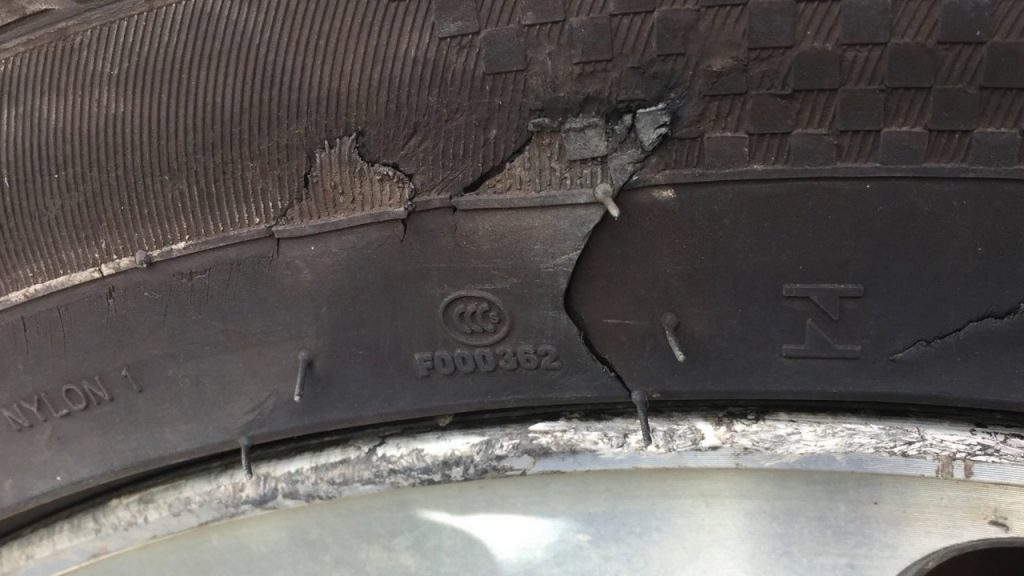
Plugging a tire this way won’t work if you get a sidewall tear or a large puncture in the tire. If you get a major blowout, the only way to fix it is to replace the tire or get an inner tube. I don’t use inner tubes because of how much extra work they are. If you ever need to fix an inner tube, you have to remove the wheel and tire, no thanks.
The first, and easiest, step is knowing what kind of terrain you will be riding on and adjusting your air pressure accordingly. To learn more about ATV Tire Pressure, check this article. But the short of it is to aim for around 5-6 psi, a little less for sand or loose terrain. If your tires are over-inflated and you plan on riding through rocky terrain, you’re greatly increasing the chances of a flat tire. Do not over-inflate your tires, you are a lot more likely to get a flat.
Avoid sharp obstacles that could puncture or tear the sidewall of your tire. Fallen logs and sharp rocks are the most common things to look out for. Some rocks and stones have razor sharp edges. When you ride over rocks, give extra attention to where you’re putting your tires. Maybe skip on the aggressive driving when you’re in rugged terrain. The faster and harder you ride, the more likely you’ll get a flat because of something you didn’t see.
Some rocks and stones have razor sharp edges. When you ride over rocks, give extra attention to where you’re putting your tires. Maybe skip on the aggressive driving when you’re in rugged terrain. The faster and harder you ride, the more likely you’ll get a flat because of something you didn’t see.
Finally, you could put some Slime Tire Sealant (link to Amazon) in your tires. This won’t work well for bigger punctures (1/4 inch) or for sidewall tears, but it will prevent small holes from giving you a flat tire. You simply put the Slime in your tire and it will help prevent you from getting a flat, or repair small leaks your tire may already have. When you do get a small leak, you can actually see the green goo seeping out of the tire, sealing it.
Next, I will go over some other tire flat prevention techniques. Before I begin though, I want to point out that I don’t use any of these methods. I simply make sure my tires are at 5 psi, maybe have some Slime in them, and have a Tire Repair And Inflation Kit stored on my ATV. I can’t recommend any of these methods because I have not used them myself.
I can’t recommend any of these methods because I have not used them myself.
If you are really worried about getting a flat tire, you could always get thicker walled tires for you quad. Most stock ATV tires are 4 or 6 ply, but you can get up to 12 ply tires. They will cost you a pretty penny and they weigh a lot more than standard tires, but are very resistant to punctures. You may have heard of run flat tires, well that’s what this is, it’s a thick enough tire to still be usable even if it does get a puncture.
There are many types of inserts out there. You basically put some kind of rubber or foam in between your tire and wheel to keep the tire from going flat. The problem with these is the hassle of dealing with them. You have to take the tire off the rim every time you want to replace one. If you’re racing for competition, this is an excellent way to avoid losing a race because of a flat tire. But for the average trail rider, this is too much work for what it’s worth.
Tire balls are just these little oval shaped urethane balls that fill the gap between your tire and the wheel. Similar to inserts, I wouldn’t use these because of the hassle. For racing though, they work great. In fact, many racers use products like these and win races doing it. The idea here is that even if you get a major puncture and a ball fails, you have many other balls in the tire so you can still finish the race.
Yet another form of tire insert, the tire blocks. Tire blocks are basically high density foam blocks that you put in your tire. They are light weight and made specifically for your tire size. The cool thing about these is that the fit is so snug that you don’t even need air in your tires at all. The foam is flexible and provides cushioning over bumpy terrain. They don’t feel quite like a standard air filled tire, but you could get a puncture with these and not even know it.
Sharing is caring!
August 31, 2017
The ATV is a great technique, but every ATV rider must know the simplest steps to repair his "beast".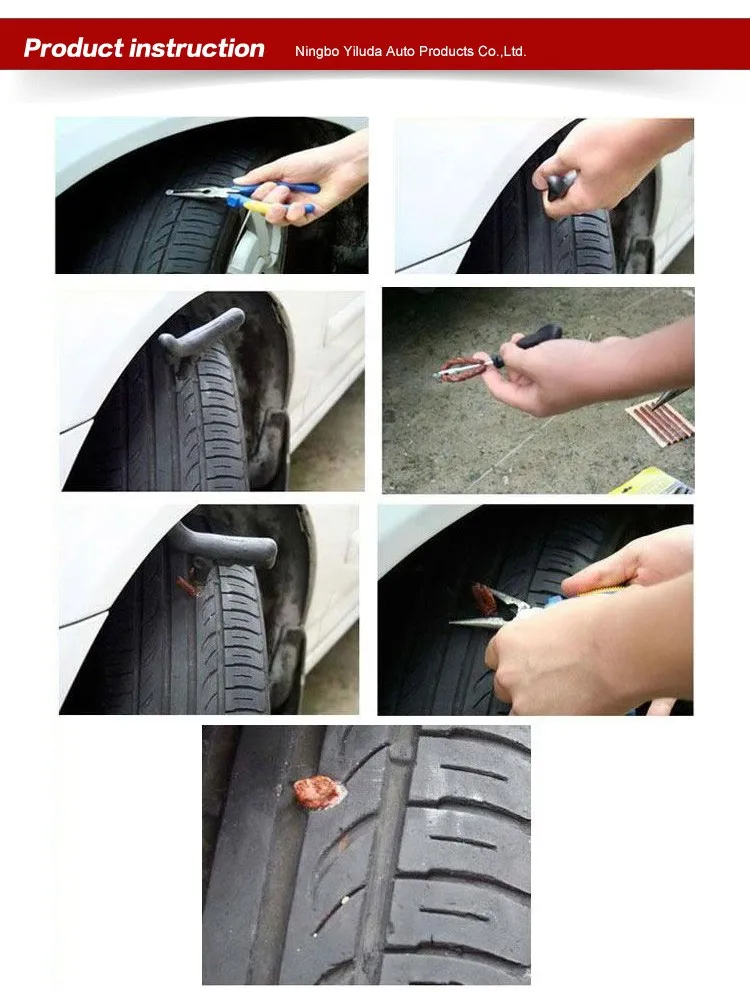 These activities include tire puncture repair .
These activities include tire puncture repair .
ATV tires are different from car tires. Low pressure quad tires , which increases the chance to puncture or cut the tire. Every ATV rider should have a puncture repair kit. ATV punctures are the norm rather than an emergency. And without tire repair experience, riding an ATV is very difficult.
When you notice leaks, you need to stop and start looking for a puncture. It is most convenient to look for a puncture by first removing the wheel, but the first stage can be carried out by dismantling the wheel.
If you are unable to locate the puncture, then remove the wheel and lower it into water, such as a puddle, lake, river. If the wheel is already heavily deflated, and the air is no longer coming out, then you need to pump it up and perform the described actions.
In the water you will immediately understand where exactly the air comes from
We take the wheel out of the water. Now you need a reamer, the tool helps to make the puncture surface rough on the rubber. This helps ensure a better bond between the adhesive and the rubber. We act like a file, only the effect is the opposite.
We take a tool to install the patch. This stage is the most responsible.
We thread the tourniquet into the tool, it is desirable to thread it so that the patch has the same tips. We cover the patch with special glue. After that, we insert all this into the puncture site. insert into the tire halfway.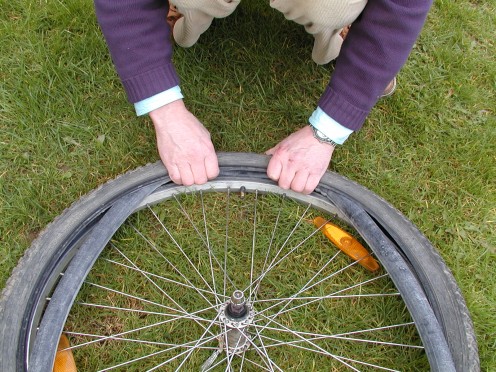
Now you need to quickly pull the tool out of the hole, but do not pull the patch with you. We install so many patches until the air stops coming out.
But before pumping, you need to let the glue dry a little.
After that, inflate the wheel, and when you are sure that the air is no longer escaping, but it is necessary to cut off the patch, leaving 3 millimeters of flagella so that the patch does not pop out while driving.
In the next article, we will analyze what to do with a tire side cut.
adv.rbc.ru
adv.rbc.ru
adv.rbc.ru
Autonews
TV channel
Pro
Investments
Events
+
New economy
Trends
Real estate
Sport
Style
National projects
City
Crypto
Debating club
Research
Credit ratings
Franchises
Newspaper
Special projects St. Petersburg
Petersburg
Conferences St. Petersburg
Special projects
Checking counterparties
Library
Podcasts
ESG index
Politics
Economy
Business
Technology and media
Finance
RBC CompanyRBC Life
adv.rbc.ru
Photo: Mikhail Tereshchenko / TASS
adv.rbc.ru
See also
Nail, rebar or sharp stone - sometimes you can damage a tire almost from scratch. First of all, the scale of damage is important, and often rubber can still be repaired. Most often, motorists turn to tire shops for repairs in the middle of autumn or spring - just in the season of replacing summer tires with winter tires and vice versa. In order not to stand in lines, it is worth knowing exactly when to go to the tire shop and when to go to the store.
Most often, motorists turn to tire shops for repairs in the middle of autumn or spring - just in the season of replacing summer tires with winter tires and vice versa. In order not to stand in lines, it is worth knowing exactly when to go to the tire shop and when to go to the store.
The most common "injury" to rubber is a puncture, and it can most often be repaired. Professionals in the nearest service will do it much faster, and your hands will remain clean. But if the puncture caught you in a deserted place, and there is a pump and a tire repair kit with harnesses in the trunk, you can patch up the tire yourself. Most often, when repairing the front tires, the wheel can not even be removed, it is enough to turn the steering wheel in the right direction and find the puncture site.
First, the hole is cleaned with a helical awl, the repair harness is smeared with glue and tucked into the eye of the awl, after which it is inserted into the tire hole. With a sharp movement, the tool is removed, and the tourniquet remains inside and securely clogs the hole.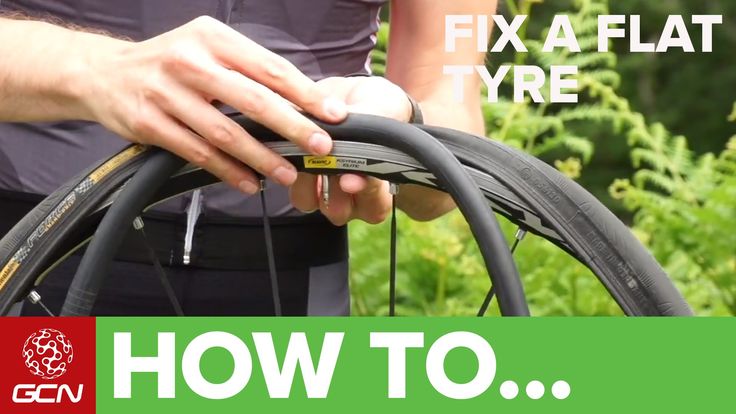 The tails are cut with a knife, but it is recommended to leave about 20 mm. After that, the tire can be inflated and the pressure checked.
The tails are cut with a knife, but it is recommended to leave about 20 mm. After that, the tire can be inflated and the pressure checked.
Repair with tourniquets is not considered long-term, because after some time they dry out and begin to let air through. A more advanced puncture repair method is vulcanization. The hole is sealed with an elastic patch, and the funnel at the puncture site is filled with a special compound. A vulcanizer is put on top, which heats the patch and solders the excess.
Under service conditions, the puncture is also repaired with cord fungus. The puncture site is processed and drilled to roughen. Everything is smeared with glue, after which a fungus is introduced from the inside of the tire, its cap is rolled, and the excess legs are cut off from the outside.
Photo: PA Images / TASS
A puncture can also be repaired with sealant. Many car manufacturers with run flat tubeless tires put compressor repair kits in the car instead of a spare tire - a bottle of pressurized sealant.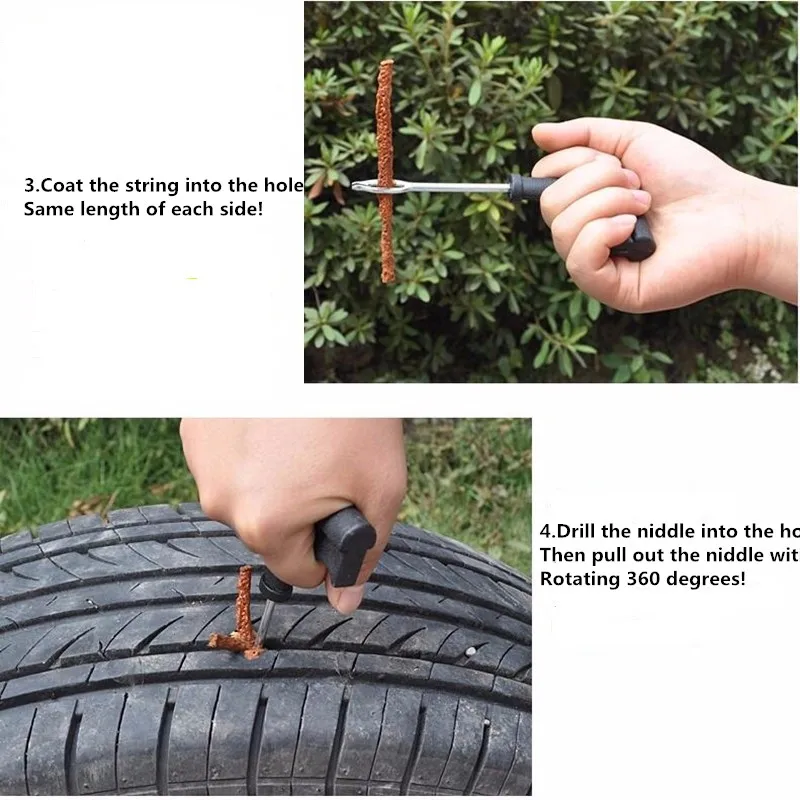 The car is raised on a jack, after which the sealant is pumped into the damaged wheel through the nipple. Next, you need to spin the wheel and pump it up. After repair, the car should be driven a couple of hundred meters to check the tightness of the tire. If it has not recovered, the procedure is repeated.
The car is raised on a jack, after which the sealant is pumped into the damaged wheel through the nipple. Next, you need to spin the wheel and pump it up. After repair, the car should be driven a couple of hundred meters to check the tightness of the tire. If it has not recovered, the procedure is repeated.
It happens that a self-tapping screw or a nail closes the hole in the tire, remaining inside. Do not rush to pull it out - until the pressure drops, you can safely get to the service for vulcanization. Sometimes the wheel begins to blow off a few weeks after the self-tapping screw got into it. Therefore, it is better to check tire pressure periodically, and if the pressure sensor lights up, you should at least visually inspect the tire for a nail head.
A bump or bulge most often occurs on the side of a tire after hitting an obstacle or hitting a hole at speed. From the impact, the sidewall carcass threads are damaged, the tire ceases to hold the load and pressure, swelling appears.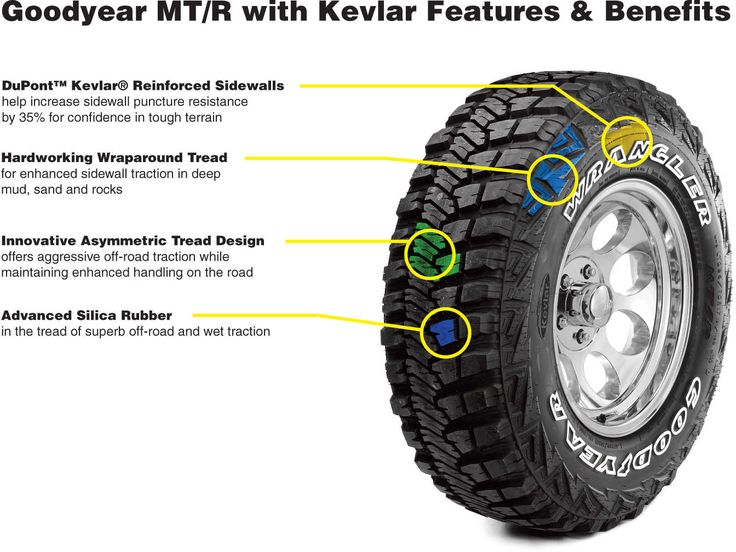 Any small bump eventually turns into a larger one, and with such a defect, the wheel can burst at any time. This is a direct safety hazard because a sudden flat tire can cause loss of control and a road accident.
Any small bump eventually turns into a larger one, and with such a defect, the wheel can burst at any time. This is a direct safety hazard because a sudden flat tire can cause loss of control and a road accident.
Some bulges can be repaired, but no patch will ever restore a tire to factory stiffness. The ideal option in this case is to replace the tire. If a hernia has appeared on the tread, then you can extend the life of the tire with the help of cord patches - ready-to-use patches with an adhesive layer. But if swelling is found on the sidewall, the likelihood of repair is minimal, the wheel is easier to change. Blisters on low profile tires are generally not repairable.
Only car service professionals can repair a side cut. Cord patches will be needed to repair the damage, but after some time the wheel will still have to be changed. This method will work only if the gap is not in the shoulder area of the tire, then no one will repair it.
In general, cuts or punctures, unlike punctures, are considered non-repairable, since the integrity of the frame is violated. And breakdowns do occur on the go, when the tire abruptly loses pressure and has time to make only a few turns “on the rims” before it comes to a complete stop. In this situation, the cord breaks and the layers of the tire are destroyed. Even if it is possible to close the hole, it is not recommended to use such a weakened tire.
And breakdowns do occur on the go, when the tire abruptly loses pressure and has time to make only a few turns “on the rims” before it comes to a complete stop. In this situation, the cord breaks and the layers of the tire are destroyed. Even if it is possible to close the hole, it is not recommended to use such a weakened tire.
Photo: Mikhail Pletsky / Russian Look
Cracks, sidewall abrasions and unprofessional tire fitting can also lead to tire problems. Cracks can occur as a result of improper storage of tires. Their danger is that moisture begins to flow to the cord, and this already renders the frame unusable. Air can also escape through cracks. Cracks cannot be repaired and tires will not last long. A tire with cracks is deformed, blistered, and may even break while driving.
Rubbing against curbs or driving on uneven roadsides can damage the tire sidewall. When driving like this, it is worth inspecting the tires for damage regularly. If a slight wear is found, the wheels can be swapped, which will slightly extend their service life and allow you to delay the purchase of new ones.